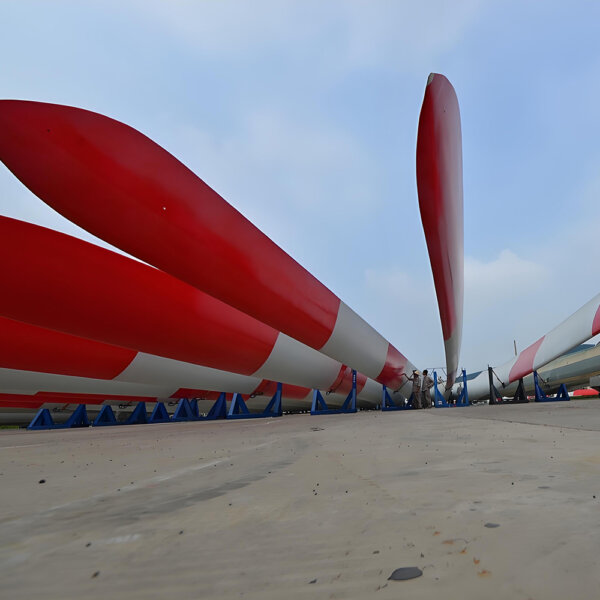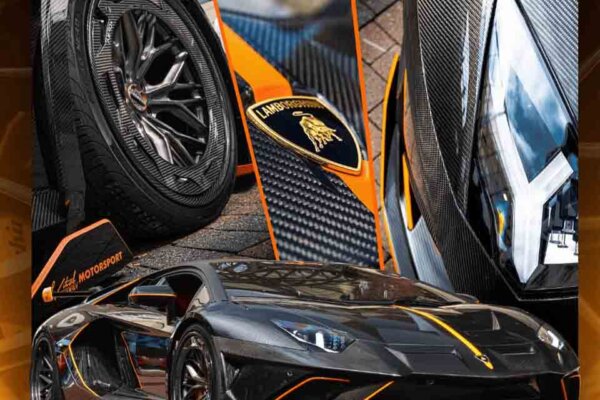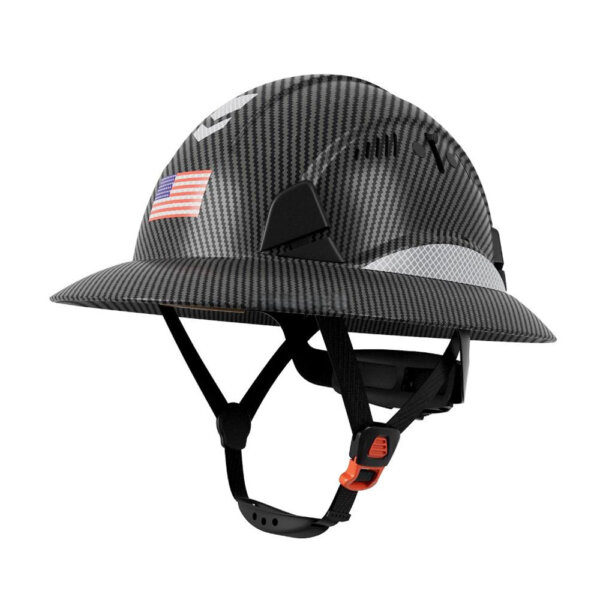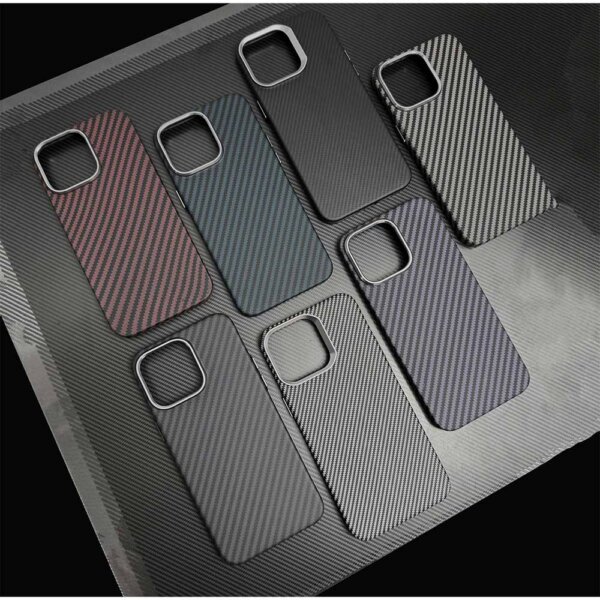
Carbon Fiber Lamborghini Price Guide
Imagine standing next to a Lamborghini and running your fingers over a kolfiber spoiler. It feels cool and smooth, with that distinctive woven pattern catching the light. If you’re like many of us, your heart skips a beat — this is high-tech material on a high-tech car. Then the big question hits you: How much did this carbon fiber kosta? And more importantly, why do people pay so much for it? This guide will walk you through the costs of carbon fiber on Lamborghinis in a way that’s personal, relatable, and genuinely helpful. We’ll explore the prices, the reasons behind them, and whether that carbon weave is really worth your money and emotion.

Why Lamborghinis Love Carbon Fiber
Lightweight strength. Carbon fiber is famous for being incredibly strong for its weight. For a supercar like Lamborghini, shaving off weight can mean faster acceleration, sharper handling, and even better fuel economy (not that anyone buys a Lambo to save gas). Lamborghini has been obsessed with carbon fiber for decades — it’s not just a gimmick, it’s part of their identity. In fact, back in the 1980s Lamborghini built a prototype Countach with a full carbon fiber body that was about 500 kg lighter than the standard model. That early experiment proved how dramatically carbon fiber could boost performance. Imagine a classic Lamborghini suddenly shedding half a ton — that’s the kind of difference we’re talking about!
Racing tech for the road. Carbon fiber was once found only in race cars and fighter jets. Now it’s a bragging point on road cars. Lamborghini, perhaps more than any other marque, has brought aerospace-grade composites into the automotive world. They even partnered with Boeing and set up the Advanced Composite Structures Laboratory (ACSL) in Seattle to push carbon fiber technology. When you see a carbon fiber hood or wing on a Lamborghini, you’re looking at something born from Formula 1 and fighter plane DNA. No wonder it makes enthusiasts giddy — it’s like having a piece of a jet on your car.
Aesthetic appeal. Let’s be honest: carbon fiber ser ut sval. That black-gray weave has become a status symbol. It tells people “this isn’t ordinary — this is exotic”. Many kolfiberbilar on the market flaunt exposed carbon not just for function but for style. Lamborghini knows this well — models like the Sesto Elemento (which literally means “Sixth Element”, a nod to carbon) left sections unpainted to show off the material’s raw beauty. In modern Lambos, even when a part isn’t saving much weight, it might be made in carbon fiber for the visual impact. There’s a certain emotional thrill in seeing that pattern and knowing it’s the same stuff used in spacecraft. It’s the marriage of engineering and art.
Forged composites — Lambo’s special sauce. If you’ve heard of Smidd komposit, that’s Lamborghini’s proprietary twist on carbon fiber. Instead of traditional woven sheets, it uses a chunky paste of short carbon fibers and resin squashed in a mold under high pressure. This lets them create wild 3D shapes and intricate designs that regular carbon fiber can’t do. It first appeared in the Lamborghini Sesto Elemento and now shows up in models like the Huracán Performante and Aventador SVJ (for example, those beautifully chaotic-looking forged carbon interior accents). Forged composites are even lighter and can be made faster than standard carbon fiber parts, potentially lowering cost a bit. But they also have a different look — more speckled than woven — which some love and some don’t. Lamborghini’s latest hybrid supercar, the Revuelto, uses a full carbon fiber “monofuselage” chassis built with these advanced techniques, making it 10% lighter and 25% stiffer than the Aventador’s traditional carbon tub. In short, Lamborghini isn’t just using carbon fiber; they’re reinventing it to push boundaries.
The Cost of Carbon Fiber: Why So Pricey?
Okay, so carbon fiber is amazing — but why does it cost an arm and a leg? The answer comes down to two things: the material itself, and the intense labor and tech that go into turning that material into a car part.
Raw material price. Surprisingly, the raw carbon fiber fabric or filament isn’t astronomically expensive by itself. Standard industrial-grade carbon fiber might cost on the order of \$10–\$20 per kilogram. That’s comparable to fancy aluminum alloys. Even a pricier aerospace-grade carbon fiber could be around \$50+ per pound (roughly \$110+ per kg). And a yard of carbon fiber cloth (the woven stuff) might run \$20–\$50 depending on quality. So if you look only at material, a few yards of carbon fiber fabric for, say, a small panel isn’t jaw-dropping.
Manufacturing and craftsmanship. The real cost kicks in when transforming that fabric and resin into a strong, flawless Lamborghini part. Carbon fiber parts aren’t stamped out by big machines in seconds like metal parts — they’re often handcrafted or made in small batches. Picture this: layers of carbon fiber fabric are carefully laid into a mold (or chopped fiber paste is prepared for forged composite), then cured in an oven or autoclave under precise conditions. It can take hours for one part to bake and harden. After curing, skilled technicians trim off excess material by hand, polish it, and inspect for any tiny air bubbles or flaws. This is labor-intensive, artisanal work. In some cases, an entire team might spend days on a single complex component. When you’re making only a few hundred parts (as is common for exotic cars or aftermarket mods), the development cost of molds and the labor isn’t spread out much. All that cost goes into the price of each piece.
Economies of scale (or lack thereof). Lamborghini doesn’t churn out millions of cars — they make a few thousand a year at most, and only a fraction of those have special carbon options. And if you’re looking at aftermarket or custom pieces, those might be one-off or limited production. Without big volume, each part is almost a custom job, and you pay accordingly. It’s like commissioning a piece of art or a tailored suit instead of buying off-the-rack.

Quality and safety. There’s also a peace-of-mind factor: you brist these parts to be top-notch. A poorly made carbon fiber part can delaminate or crack, which is not just ugly but potentially dangerous if it’s structural. Reputable makers (including Lamborghini’s own suppliers and high-end aftermarket brands) will have strict quality control — sometimes even X-raying or ultrasound-scanning parts for internal flaws. That adds cost, but as an owner, you’d rather pay for a good part than have a cheap one fail at 200 mph. Using a trusted tillverkare av kolkomposit with experience in automotive components ensures the part meets safety and performance standards. Cutting corners on something like this is aldrig a good idea.
Finishes and extras. Finally, if you opt for a special finish — say a gloss clear coat to show the weave, or a matte finish — that can also influence price. Glossy exposed carbon is popular (who doesn’t want to see the carbon?), but it requires a perfect weave layup beneath since any flaw will show. Sometimes additional UV-resistant coatings are applied so the part won’t yellow in the sun. All these little touches add up in the final bill.
Sticker shock example: To put it in perspective, spegelkåpor i kolfiber (those small shells that replace your side mirror housings) could cost you \$1,500–\$2,500 just for the pair, depending on brand and model. A hood (bonnet) in carbon fiber might be \$5,000 or more, while a full carbon fiber bakre diffusor (the aerodynamic piece under the rear bumper) can run \$3,000–\$4,000 These aren’t huge parts, but the prices reflect the craftsmanship and limited production. It’s normal to gulp a bit when you hear these numbers — even passionate car folks feel that! But understanding why the cost is high (material + labor + low volume + quality demands) helps it make sense.
Factory Lamborghini Carbon Fiber Options (and Their Prices)
When you buy a new Lamborghini, you get the chance to add on optional goodies — and you bet carbon fiber accents are on that list. Lamborghini knows buyers love this stuff, so they offer factory carbon fiber packages for both the exterior and interior of many models. These factory options have the advantage of being designed and tested by Lamborghini and installed from day one (plus they’re covered by warranty). The downside? They are dyr — often much pricier than equivalent aftermarket parts. But for a lot of buyers, the premium is worth the peace of mind and perfect fit/finish.
Take the Huracán STO (a street-legal racecar variant of the Huracán) for example. Lamborghini offered a Carbon Pack Exterior that included things like the front hood (the “cofango” in Lambo-speak) in visible carbon, plus carbon fiber on the rear diffuser, snorkel air intake, and some trim. If you ordered these à la carte, you’d spend around \$28,200 total, but as a bundled package it was about \$21,600 (gloss glänsande finish) or \$17,600 for the matte carbon pack. That’s nearly twenty grand to have external bits in carbon fiber instead of plastic or aluminum. Likewise, an Interior Carbon Pack (twill carbon fiber trim on the dashboard, console, door panels, plus carbon floor plates) was around \$13,200 for the STO. These are hefty add-ons on a car that already costs over \$300k. And yet, many buyers tick those boxes because it completes the look and feel they want. When you’re spending that much on the car, an extra \$20k for the ultimate version isn’t so crazy to the ultra-wealthy buyer.
Even on Lamborghini’s flagship models, you can throw piles of money at carbon options. The newest V12 hypercar, the Revuelto, lets you go wild with carbon fiber. You can spec carbon fiber for the front splitter, engine cover, mirrors, interior trim, and so on. Go down that rabbit hole and you could be looking at nearly \$100,000 in carbon fiber enhancements on top of the base price! That’s right — six figures just in carbon fiber bits. This might include specialized pieces like a full carbon roof, carbon ceramic engine bay covers, and more. At that point, the carbon fiber options alone cost as much as an entire new BMW. It’s a bit mind-bending, but this is the level of exclusivity and personalization on offer.
Here’s a quick look at some verified Lamborghini carbon fiber option pricing (factory and aftermarket) to give you a sense of the range:
| Carbon Fiber Upgrade | Approximate Price (USD) | Detaljer |
|---|---|---|
| Huracán STO Exterior Carbon Pack (Matte) | \$17,600 | Includes visible carbon cofango hood, rear diffuser, snorkel, etc. (matte finish) |
| Huracán STO Interior Carbon Pack | \$13,200 | Carbon fiber interior trim (dash, console, door) + foot plates |
| Aventador S Full Carbon Fiber Body Kit (Aftermarket) | ~\$19,500 (original MSRP) \$12,000 on sale | Complete replacement of multiple body panels (Scopione kit for Aventador S) |
| Huracán Rear Diffuser (Aftermarket) | ~\$3,700 | Carbon fiber rear bumper diffuser for Huracán LP610 (aftermarket brand) |
| Huracán Rear Wing Spoiler (Aftermarket) | ~\$1,300 | Add-on 3-piece carbon trunk spoiler for Huracán (aftermarket) |
| Carbon Fiber Side Mirror Caps (Aftermarket) | ~\$1,700 — \$2,500 | Replacement mirror housings (price range for Gallardo vs. Huracán models) |
| Urus Interior Trim Kit (Aftermarket) | ~\$6,500 | Carbon fiber dashboard & door panels for Urus (aftermarket) |
Table: Examples of carbon fiber upgrades for Lamborghini, from official Lamborghini options to aftermarket parts. Factory options tend to be pricier, while aftermarket parts (like those from a specialized anpassad kolfiber shop) can sometimes save cost or offer unique designs. Always verify compatibility and quality when considering aftermarket solutions.
As you can see, the costs vary widely. A small add-on like a spoiler might be in the low thousands, whereas comprehensive packages or big structural pieces climb into five figures. Factory parts carry a premium but ensure perfect integration. Aftermarket parts range from high-end suppliers (often just as good as factory, sometimes even made in the same workshops) to cheaper mass-produced versions. The cliché “you get what you pay for” largely holds true — ultra-cheap carbon parts might not fit well or could be just a carbon layer on fiberglass (beware of anything that seems too good to be true).
Aftermarket vs. Factory: Choosing Your Carbon Fiber Path
If you already own a Lamborghini or are planning to personalize one, you have a decision to make: go with factory options or dive into the aftermarket? Both paths have their pros and cons, and the right choice depends on your priorities.
Factory options (OEM carbon fiber): These are the parts Lamborghini will install on your car if you order them when buying new, or you can sometimes have dealers retrofit official parts later. The clear benefit is perfect fit and finish — they’re literally made for your car. The carbon weave will often match other factory carbon (Lamborghini has a certain pattern and gloss they use), and you keep the car “all Lamborghini”. This can help resale value; collectors love to see factory build sheets with the coveted “carbon package” listed. However, you pay dearly for this. Lamborghini’s carbon parts can cost 2x or more what an equivalent aftermarket piece costs. And for older models, getting OEM carbon parts might be tricky (some get discontinued or stock runs out).
Aftermarket parts: The alternative is huge and diverse. There are small boutique companies that make anpassad kolfiber parts for Lamborghinis, large well-known aftermarket brands, and everything in between. For example, companies like Scopione, Novitec, Mansory, and many others offer everything from a simple carbon front lip to a wild full wide-body kit. De costs can be lower — sometimes significantly. In our table above, that Aventador kit at ~\$19.5k is an aftermarket kit; an equivalent set of pieces from Lamborghini directly (if they even offered them all) could easily double that. Aftermarket also offers unique styles — you’re not limited to the designs the factory chose. Want a bigger wing or a different weave pattern? It’s out there.
Working with a quality anpassad kompositfabrik can even let you create one-of-one pieces. I’ve seen owners commission bespoke carbon fiber engine covers with their name embossed, or custom splitters that nobody else has. The personalization potential is endless if you have the imagination (and wallet). Plus, some aftermarket providers use the same or better materials; a few are known to use pre-preg autoclaved carbon just like Lamborghini, meaning the part is essentially motorsport grade.
But it’s not all sunshine in aftermarket land. The downsides: not all parts are equal. There are knock-offs and low-quality parts circulating, often at tempting prices. These might not fit properly — imagine a wavy gap or a bolt hole that doesn’t line up, which is frustrating on a car of this caliber. Worse, a poor-quality part could fail (we don’t want a carbon fiber aero piece flying off on the highway). So you have to do your homework. Stick with reputable brands or makers with good reviews from the Lambo community. Ideally, look for guarantees or warranties. Some top aftermarket companies proudly emphasize their parts are made in high-tech facilities and even offer crash test data or stress analysis for critical components.
Installation is another factor. Factory-installed means it’s done when the car is built. Aftermarket means you’ll be installing it later. Some pieces are easy DIY or local shop jobs (like mirror caps or interior trims). Others, like a full hood or aero kit, you might want a specialist to fit to ensure alignment is perfect. Installation cost (and risk) is something to consider. The last thing you want is a scratched \$5k carbon hood because the shop was careless, or paint damage around where a new carbon part goes on.
Blending both? A number of Lamborghini owners mix and match. They might buy a car that already has some factory carbon, then add a few aftermarket touches later. That’s totally common. You might start with an OEM carbon interior (because you wanted the factory look inside), but then add an aftermarket carbon side skirt set because you prefer that style or price. There’s no hard rule — it’s your car, and you can approach carbon fiber upgrades à la carte.

The Emotional Question: Is Carbon Fiber Worth It?
Now we come to something a spreadsheet can’t tell you: how does it känsla to invest in carbon fiber for your Lamborghini? This is where the head meets the heart. Let’s be real — none of these parts are necessary. Your Lambo will drive just fine with standard parts. So it becomes a matter of passion, personal preference, and the experience you want.
Performance vs. Aesthetics vs. Pride. Everyone has their own reason for craving carbon fiber. Some of us are performance geeks: we love the idea that our car is a few kilograms lighter, edging us closer to that racecar feeling. If that’s you, carbon fiber might absolutely feel worth it. Shaving 50–100 kg off a car (possible if you replace a lot with carbon) can make a noticeable difference on a track day. It’s the difference between bra och stor lap times, or a car that feels a tad more agile in corners. On the other hand, many people just adore the titt. There’s no shame in that! Carbon fiber gives a car a more aggressive, exotic appearance. Every time you walk into your garage and see those gleaming carbon accents, you get a thrill. It’s a form of pride of ownership — knowing your car has the best of the best. Even if the weight savings don’t matter to you, the emotional boost might. It’s similar to putting a piece of art on your wall: does it make you happy when you see it? If yes, it has value.
Answering the “why” to yourself. One exercise some owners do (I’ve done this myself) is list out what you hope to gain with a carbon fiber upgrade and what doubts you have. For example: “I want that carbon fiber wing because it will make my Aventador look like the SVJ model, and I just love that look. I worry it’s a lot of money and maybe I should spend it on something else.” Writing it out can clarify your thoughts. If the desire is purely for looks, ask if there’s a cheaper way to achieve a similar effect (sometimes painting a part gloss black or wrapping it in a carbon-look vinyl can mimic it for pennies — though of course, that’s not verklig carbon). If the desire is performance, consider the bang-for-buck; could you achieve more with a different mod (like better tires or a tune) for the same money? Often carbon fiber is as much an emotional purchase as a practical one, and that’s okay. Recognizing that can help you decide without regret.
Resale and value retention. If you’re concerned about getting your money back, think carefully. Factory carbon options usually add to resale value, but not dollar-for-dollar what you paid. Aftermarket parts — it depends. Some buyers will pay extra for a car that’s tastefully outfitted with carbon upgrades, especially if it’s a well-known brand or something like a full kolfiberbilar themed build. Other buyers prefer stock and won’t give you a dime more for the mods (and in some cases might want you to include the original parts too). So, as the saying goes, don’t modify a car expecting to make money — do it because du enjoy it. The smile it puts on your face each time is the real return on investment.
Maintenance and practicality. Emotionally, you should also prepare for the care carbon fiber needs. It’s not arduous, but you have to treat it a bit like a painted surface. Keep it clean and waxed (especially if exposed weave) to protect that clear coat. Be cautious — carbon fiber can scratch or chip just like paint. And if a carbon part cracks, repairing it is a specialized job (there are workshops that do carbon fiber repair, but it’s not as straightforward as banging out a dent in metal). I’ve had that pang of heartbreak seeing a rock put a ding in a carbon splitter. It helps to remember: cars are meant to be driven. These parts can be fixed or replaced if needed. But go in knowing you’ll worry about them a little, just as you would fancy wheels or a custom paint job.
The joy factor. Ultimately, many owners say that after all the justifications, it comes down to one thing: glädje. Does having carbon fiber bits on your Lamborghini spark joy? For a lot of us car enthusiasts, the answer is a resounding yes. It’s the same joy a kid gets from attaching shiny cards to their bicycle spokes (if you ever did that) — it doesn’t make it go faster, but it sure feels cool. Except here, in some cases it gör make it go faster or handle better, which is a nice bonus. If every time you walk around your car, you find yourself admiring that carbon fiber diffuser or engine bay cover and it makes you grin, then it was worth it in an intangible but very real way.
Making the Right Choice for You
By now, you have a good sense of what carbon fiber parts for a Lamborghini cost and why. It ranges from the relatively small items at a few hundred or thousand dollars, up to all-in builds that can cost more than a brand new sports car just in carbon pieces. There’s no one-size-fits-all answer to whether you should spend that money. It depends on your goals, your budget, and what makes you happy as a Lamborghini owner or fan.
Tips if you’re buying:
- Prioritize what matters. If performance is key, focus on parts that shed the most weight (hoods, seats, wheels if available, body panels) or improve aero (spoilers, diffusers). If aesthetics are the goal, you might get just as much thrill from a well-placed interior trim or engine bay accent which costs less.
- Staged upgrades. You don’t have to do it all at once. Maybe start with one or two carbon pieces and see how you like the look/feel. Many people catch the “carbon bug” and gradually add more over time. There’s fun in each step, like building your dream car bit by bit.
- Research and connect. Join Lamborghini owner forums or social media groups. See what others have done, get feedback on various brands. The community is generally excited to share, and you can avoid pitfalls by learning from their experiences. They might point you to a trustworthy tillverkare av kolkomposit or a skilled installer in your area.
- Consider weight vs. cost. If you’re analytical, calculate the cost per pound saved for a performance mod. For instance, if a carbon hood saves 20 lbs and costs \$6000, that’s \$300 per pound. Some will find that worth it in a supercar context (where that 20 lbs is up high on the car, affecting center of gravity), others might balk. Compare it to other weight reduction mods or power mods in cost-effectiveness.
- Embrace your choice. Once you decide, own it. If you go for the carbon upgrades, don’t let anyone rain on your parade — enjoy them, show them off, take pride in the craftsmanship. If you decide to pass or keep it minimal, enjoy the peace of mind that you kept things simpler and saved money. There’s no wrong answer because it’s din experience that counts.
At the end of the day, carbon fiber in a Lamborghini is about passion meeting engineering. It’s there because this isn’t just any car — it’s a statement on wheels. Whether you indulge in just a dash of carbon trim or transform your Lambo into a full carbon-clad beast, the key is that it should amplify your connection with the car. There’s something undeniably human about it: we take a machine and make it our own, using a material that’s as much art as science. That’s the heart of customization.
So, is carbon fiber expensive? Yes. Is it amazing? Absolutely yes. And if done right, it can make your Lamborghini feel as special as you dream it to be. In that sense, for many of us, it’s worth every penny and every goosebump it brings when we see that shiny weave in our driveway.


